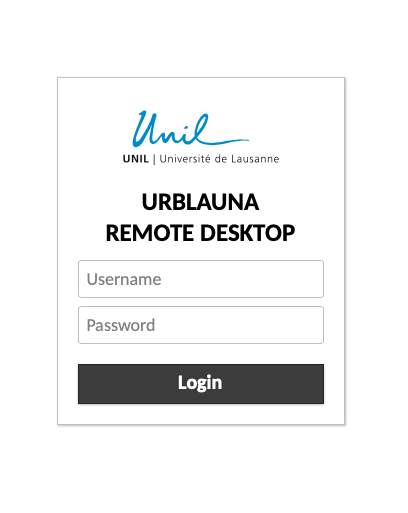Urblauna migration
Urblauna
Urblauna is the new UNIL cluster for sensitive data and will replace the Jura cluster.
Documentation
As well as this page there is documentation at:
https://wiki.unil.ch/ci/books/high-performance-computing-hpc/page/urblauna-access-and-data-transfer
https://wiki.unil.ch/ci/books/high-performance-computing-hpc/page/jura-to-urblauna-migration
https://wiki.unil.ch/ci/books/high-performance-computing-hpc/page/urblauna-guacamole-rdp-issues
Nearly all the documentation for Curnagl is also applicable.
The introductory course for using the clusters is available HERE
Support
Please contact the DCSR via helpdesk@unil.ch and start the mail subject with "DCSR Urblauna"
Do not send mails to dcsr-support - they will be ignored.
Specifications
- 18 compute nodes
- 48 cores / 1 TB memory per node
- 2 nodes with NVidia A100 GPUs
- 1PB / data filesystem
- 75TB SSD based /scratch
For those of you have already used Curnagl then things will be very familiar.
An Urblauna is also:
How to connect
For Jura the connection method is different depending on if one connects from the CHUV or the UNIL networks - for Urblauna it's the same for everyone.
Two Factor Authentication
You should have received a QR code which allows you to setup the 2FA - if you lose your code then let us know and we will generate a new one for you.
SSH
% ssh ulambda@u-ssh.dcsr.unil.ch
(ulambda@u-ssh.dcsr.unil.ch) Password:
(ulambda@u-ssh.dcsr.unil.ch) Verification code:
Last login: Wed Jan 18 13:25:46 2023 from 130.223.123.456
[ulambda@urblauna ~]$
The 2FA code is cached for 1 hour in case that you connect again.
X11 Forwarding and SSH tunnels are blocked as is SCP
Web
Go to u-web.dcsr.unil.ch and:
This will send you to a web based graphical desktop that should be familiar for those who already access jura.dcsr.unil.ch
Data Transfer
The principle method to get data in/our of Urblauna is using the SFTP protocol
On Urblauna your /scratch/<username> space is used at the buffer when transferring data.
% sftp ulambda@u-sftp.dcsr.unil.ch
(ulambda@u-sftp.dcsr.unil.ch) Password:
(ulambda@u-sftp.dcsr.unil.ch) Verification code:
Connected to u-sftp.dcsr.unil.ch.
sftp> pwd
Remote working directory: /ulambda
sftp> put mydata.tar.gz
Uploading mydata.tar.gz to /ulambda/mydata.tar.gz
The file will then be visible from urblauna at /scratch/ulambda/mydata.tar.gz
What's new
There are a number of changes between Jura and Urblauna that you need to be aware of:
/data
The /data filesystem is structured in the same way as on Jura but it is not the same filesystem
The Jura /data filesystem is available in read-only at /jura_data
/scratch
Unlike on Jura /scratch is now organised per user as on Curnagl and as it is considered as temporary space there is no fee associated.
There are no quotas but in case of the utilisation being greater that 90% then files older than 2 weeks will be removed automatically.
/users
The /users home directory filesystem is also new - the Jura home directories can be accessed in read-only at /jura_home.
/work
The Curnagl /work filesystem is visible in read-only from inside Urblauna. This is very useful for being able to install software on an Internet connected system.
The DCSR software stack
This is now the default stack and is identical to Curnagl. It is still possible to use the old Vital-IT /software but this is deprectaed.
For how to do this see the documentation at Old software stack
There's lots of information on how to use this in our introductory course
Installing your own software
We encourage you to ask for a project on Curnagl (HPC normal data) which will allow you to install tools and then be able to use them directly inside Urblauna.
See the documentation for further details


